To trace the origins of the University Library of Pavia we must go back as far as 1754, when the institution was founded by Maria Theresa of Austria as part of her reform of the university system and that of public education in the Duchy of Milan then ruled by the Habsburgs of Austria: in 1763 the post of director was entrusted to Gregorio Fontana, who arranged the books at the Ghislieri College and in 1772 opened the Library to the public, before moving it to the premises of the new university building which, starting in 1778, the year to which the “official” birth of the library is traced, would house what was then called the “Imperial Regia Biblioteca Ticinese.” One of the prides of the University Library of Pavia has always been its collection of scientific books: although the institute was formed by forfeiting private or ecclesiastical libraries, preference from the outset was given to scientific texts, and for about a century the Library continued to be enriched with acquisitions that ensured that it was up-to-date on the most current topics and provided the institute with the most modern tools to support university study and research.
Thus, the holdings of the physician and botanist Albrecht von Haller, which included volumes on natural history, botany, physics, chemistry, pharmacopoeia, human anatomy, and physiology, became part of the library, and were followed by the library of Charles Joseph of Firmian, governor-general of Austrian Lombardy from 1771 to 1782, which included numerous books on natural sciences and medicine, and then again the library of physician Joseph Frank, that of the deputy prefect of the Botanical Garden of Pavia, Giuseppe Moretti, specializing in natural sciences, part of the library of naturalist Santo Garovaglio, specializing instead in botany, the library of physician Alfonso Corradi, which included a rich section on the history of medicine. Last but not least, joining the library in 1840 was the Aldini fund, i.e., the nucleus of books of academic and bibliographer Pier Vittorio Aldini (Cesena, 1773 - Pavia, 1842), who in 1830 decided to sell his important collection of manuscripts for financial reasons: the then director of the University Library, Luigi Lanfranchi, who was well aware of the value of the collection, initiated negotiations with the Austrian government, which lasted for a good ten years but was eventually resolved positively, since in 1840 the administration of Austrian Lombardy granted an extraordinary grant to purchase Aldini’s manuscripts. This valuable collection includes 583 codices: although religious texts predominate, of great importance are the ancient herbals in the collection.
The most unique is certainlyAldini 211: this is a membranous codex from the 14th century, written in full page, with ink traced rulings and writing in lower case Gothic, titles in red, and initial letters of large paragraphs in red and blue. The uniqueness of this herbarium, a copy of an anonymous Herbarium from the thirteenth century that collects knowledge and legends about the therapeutic properties of dozens of different plants, lies in its rich iconographic apparatus: the treatise is in fact alternated with 154 polychrome drawings, which often occupy the entire page, and depict the herbs addressed in the text. In several places, moreover, the papers were scraped with pumice stone for reasons of censorship, as indicated by the phrase prohibitum est sometimes placed above the abraded writing.
Aldini 211 is a codex that stands out above all for its historical value: there are frequent quotations from doctors and scientists in the text, denoting the good culture of the person who compiled the text, although the Latin used in the treatment sometimes appears claudicant. The illustrative apparatus consists of drawings that are sometimes realistic and sometimes fantastic: in fact, hands, faces and even fictional animals (dragons, for example) often appear among the depictions of plants, conveying to us the breadth of medieval beliefs about plants, situated somewhere between science and magic. Of the mandrake, for example, the author wrote that it was used externally as an antiphlogistic (that is, as an anti-inflammatory) and analgesic, applying its leaves to inflamed or painful parts, and that its internal use was considered toxic. However, according to theHerbarium, the juice of the root bark could be used as a strong purgative and, when mixed with wine, also had anesthetic properties for amputating parts of the body without feeling pain. In addition, the author of theHerbarium states that mandrake had a very unpleasant odor, to the point that breathing its effluvia could drive one insane.Aldini 211 depicts the mandrake in the shape of a man, with a decidedly peculiar design: the topmost part in fact is occupied by leaves and berries, the root has the shape of a manly body, and is traced in pen and shaded in watercolor, while at the foot of the humanized root we see a dog extirpating the mandrake, and on the right we also see its master, kneeling, his ears plugged so as not to hear the deadly screams of the plant.
 Aldini
Aldini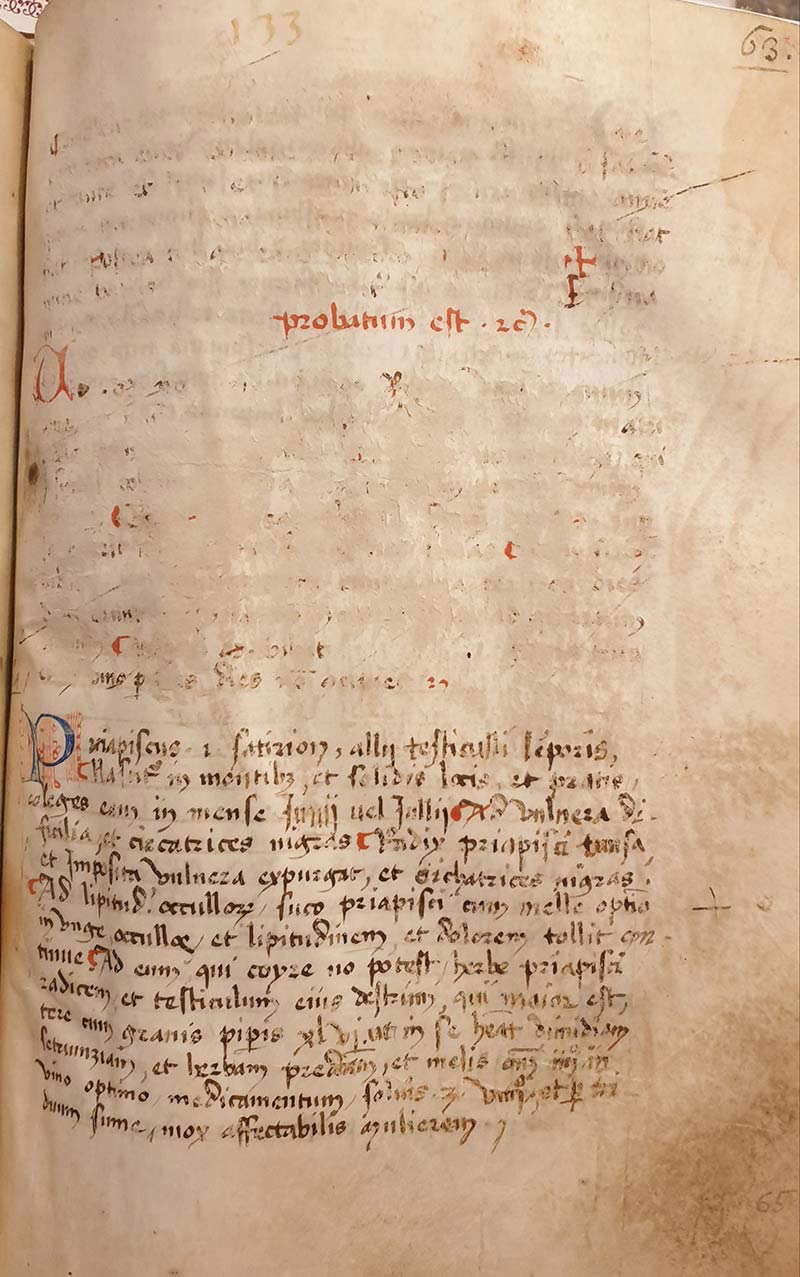
Closer to our way of studying and learning about plants are two more recent manuscripts, Aldini528 andAldini 533. The first is a paper manuscript, bound in red leather with gold friezes, which conveys theIconographia nollullarum herbarum (“Iconography of some herbs”) by Damiano Mascaroni, a monk of the Carthusian monastery of Pavia who compiled this herbarium in 1779, personally painting in watercolor one hundred plates of flowers and herbs typical of the Pavia area, and dedicating it to the prior of the Carthusian monastery itself, Father Arsenio Quintieri. This is an important work created with the intention of documenting the appearance of certain plants: the frontispiece of the work, in capital letters, is enclosed in a frame on the colors of pink and yellow, while the interior presents, on each paper, a full-page depiction of a medicinal plant, with the explanatory caption in the lower, inner or outer margin. The text is also important because it is one of the first works in which plants are illustrated by name following Linnaeus’ classification: the Swedish botanist Carl Nilsson Linnaeus (Rashult, 1707 - Uppsala, 1778), later to become Carl von Linné and Italianized as Carlo Linnaeus, introduced in 1735 the binominal system of plant nomenclature, still in force today, which calls for the use of two names to classify plants, animals and minerals, the first referring to the genus to which they belong and the second to the species.
Mascaroni’s work is notable for the marked realism with which the monk drew the plants (see, for example, the illustration ofAchillea millefolium).Aldini 533, on the other hand, contains a Herbarium that accommodates 84 depictions of plants and herbs, one on each paper, recto and verso (i.e. front and back). The uniqueness of this codex lies in the fact that it is an "impression her barium" (or impressed herbarium): this is the name given to those herbaria in which the images of plants were made using real plant specimens of leaves or branches, which were then smoked with a source (most often a candle), and then compressed on a sheet of paper so that a perfect reproduction of the original would be preserved. When this operation was finished, the original was thrown away and the sheet retained its own impression, which could sometimes be colored so that it would be more lifelike (in fact, an attempt was made to imitate the originals as closely as possible). Imprinted herbaria were believed to be more scientifically reliable than herbarii picti, that is, those in which the illustration was simply drawn. The captions inAldini 533 are penned by a single hand writing mainly in capital letters, sometimes in humanistic. The estimated date of compilation is 1525-1530, based on the study of pigments and the technique used to make the depictions of plants and medicinal herbs. The compilation of this codex fits into the production of herbaria in the period between 1530 and 1550, which was fundamental to the evolution of botanical collections.

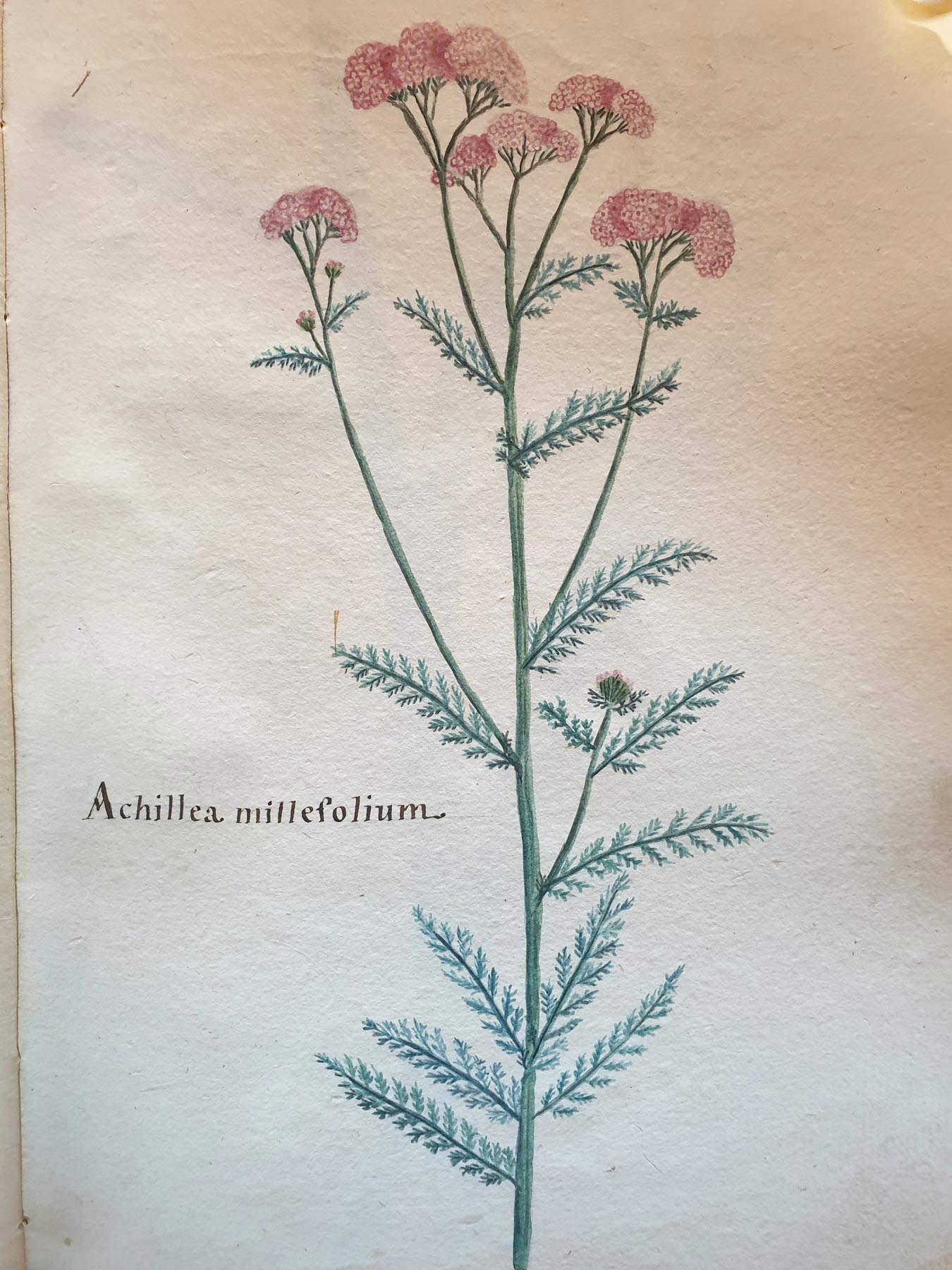
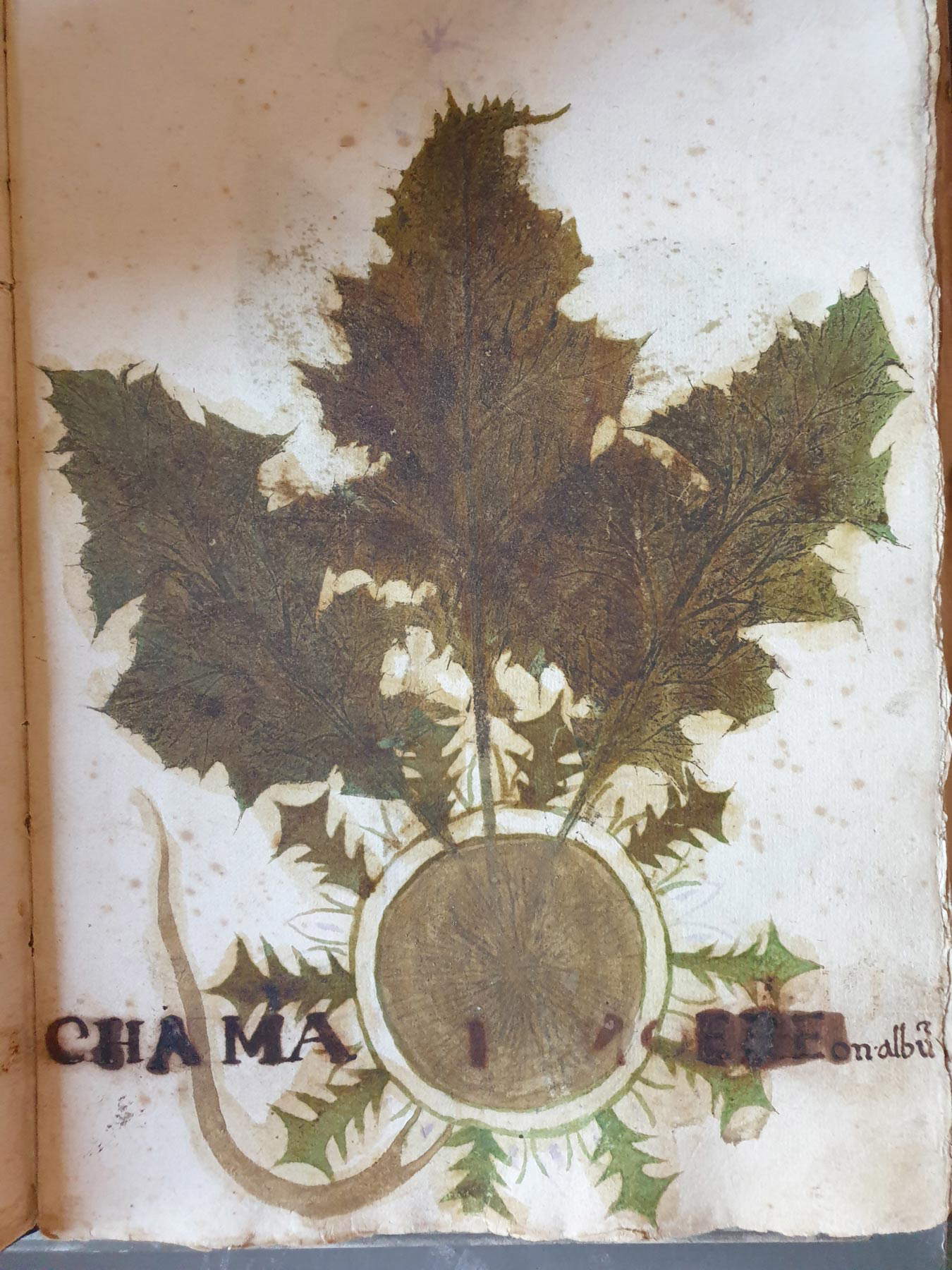 Illustration of
Illustration of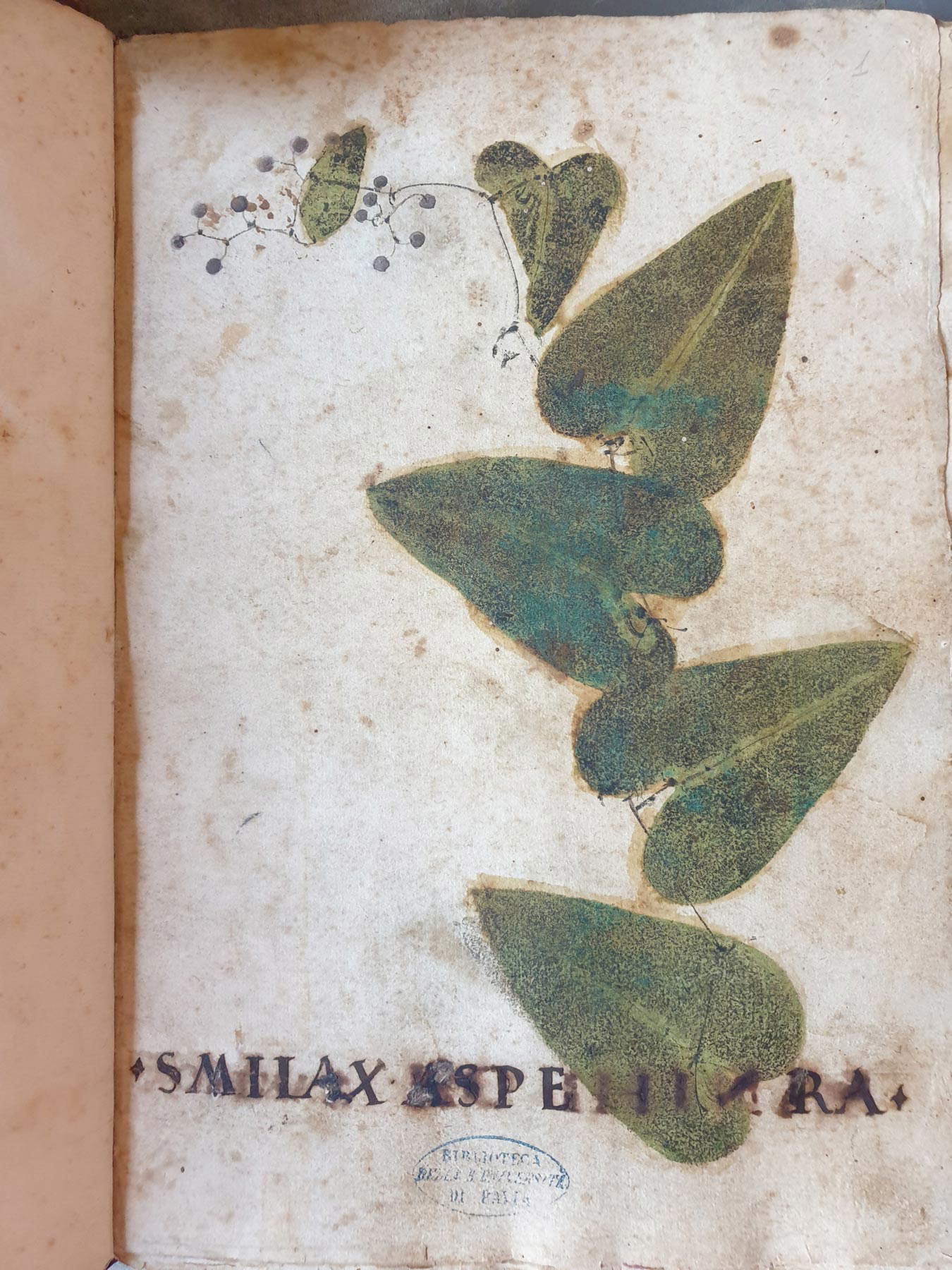 Illustration of the
Illustration of theFinally, two other herbaria deserve mention. The University Library of Pavia preserves an incunabulum of theHortus sanitatis by Johannes de Cuba (Johann von Wonnecke Caub; 1430 - 1503), a milestone in botanicalpublishing as one of the first botanical works to be printed (in Mainz, in 1491, by Jacob Meydenbach). The book was written in Latin because it was primarily aimed at a European audience, was printed in folio format (about 50 centimeters), and the first printing was also followed by three reissues and a French translation. TheHortus sanitatis was used by Italian and foreign physicians and apothecaries, and was adorned with many woodcuts on the animal plant and mineral kingdoms, which, in the Pavia University Library copy, are hand-colored. The treatise consists of five books: De Herbis, with 530 chapters devoted to plants and botanical essences; De Animalibus, 164 chapters on animals, opened by a section on human beings; De Avibus, 122 chapters on birds and other animals associated with the air; De Piscibus, 106 chapters on fish and aquatic animals; and De Lapidibus, 144 chapters on stones and minerals. On the margins of the copy in the University Library of Pavia are handwritten notes that reveal how involved readers were in the description of the natural kingdoms: the medieval information, necessarily incomplete, to be verified and systematized, in fact enticed readers to compare it with their own knowledge and then to take action on the text. This was done by doctors and apothecaries but also by people simply interested in discovering the therapeutic properties of plants: the volume’s large format and generous margins lent themselves well to collecting the results of the comparison.
It is later, however, the Italian Pomona, a monumental work with 152 pomological cards ( pomology is the study of fruits) and 160 aquatints made by numerous Ligurian and Tuscan artists including some women, under the supervision of its author, Giorgio Gallesio (Finalborgo, 1772 - Florence, 1839). The Italian Pomona was an unprecedented publishing venture for our country: in fact, it describes and depicts “the most exquisite varieties of the fruit trees cultivated in Italy,” as the text states, and was printed on fine paper and decorated with high-quality finishes, so much so that the cost was prohibitive for most people, even the wealthy classes (the Italian Pomona was in fact printed in a few dozen copies). The treatise, printed in Pisa by Amoretti with first issue in 1817 (but the various dispensations came out several times until 1839, when the forty-first was given to the presses, and the work was still incomplete), offers the most complete representation of the Italian fruit varieties that were present in our country in the early nineteenth century, and is also of considerable documentary and taxonomic importance for knowing the state of pomology at the time the treatise was compiled.
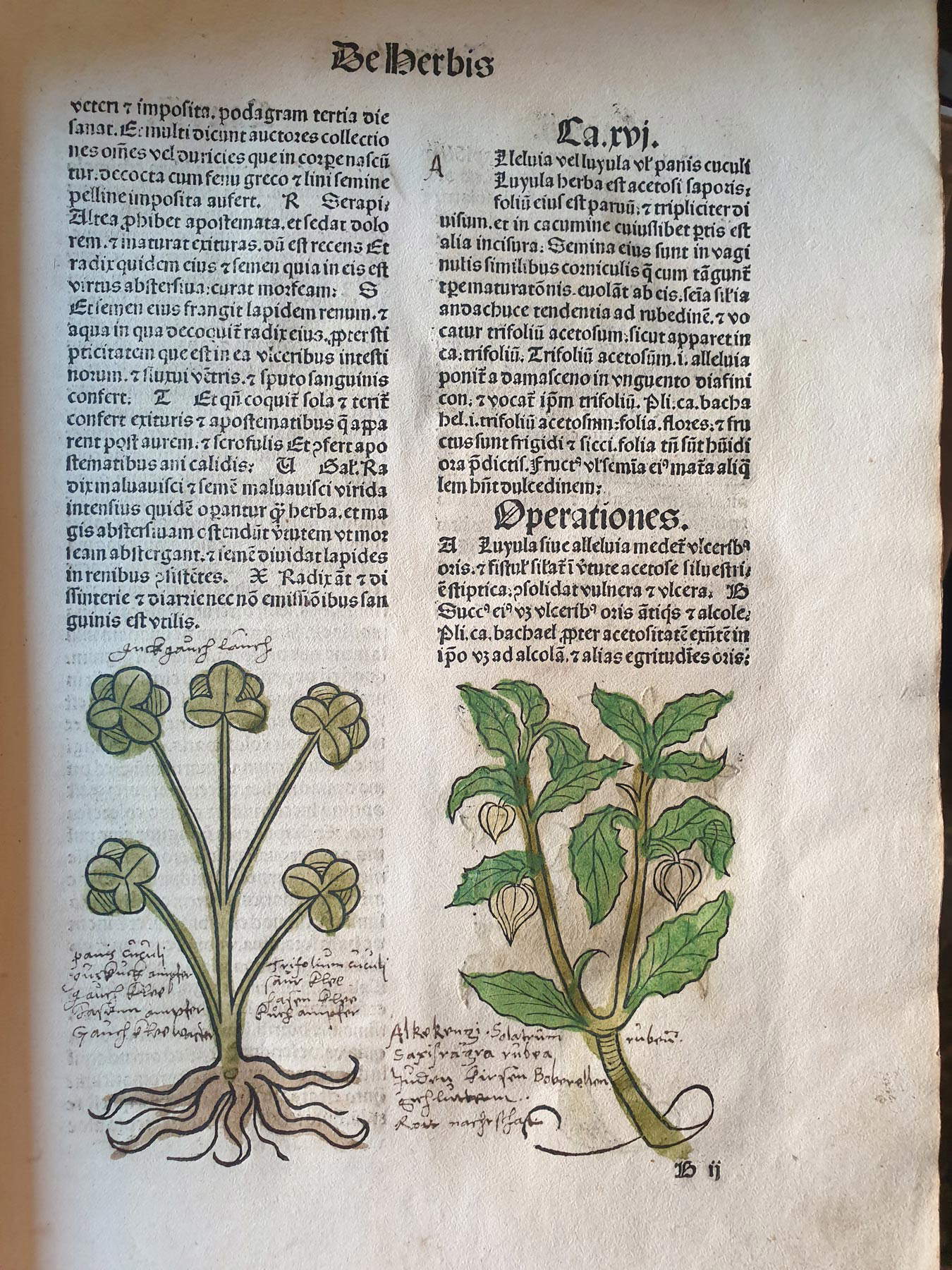
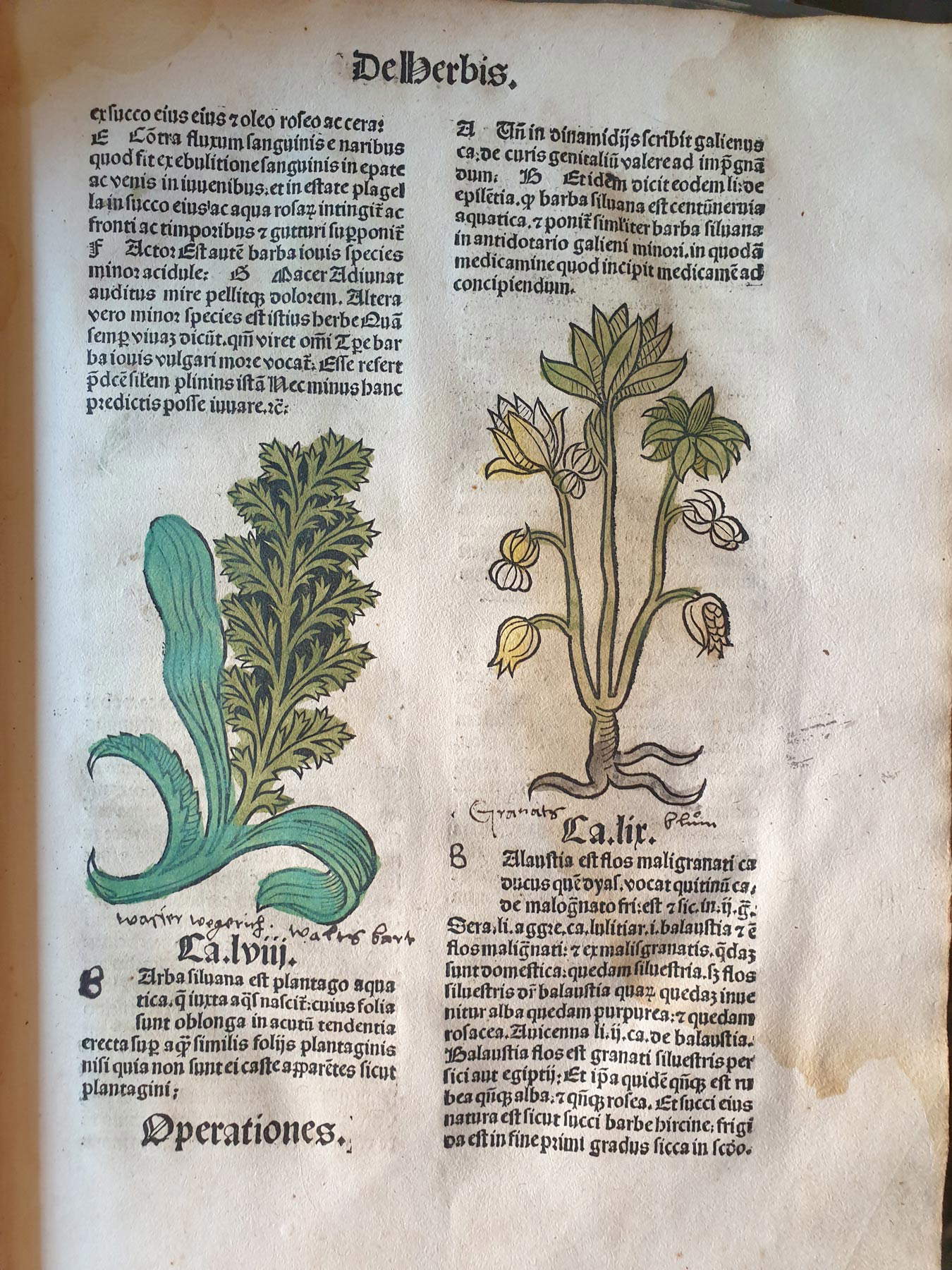

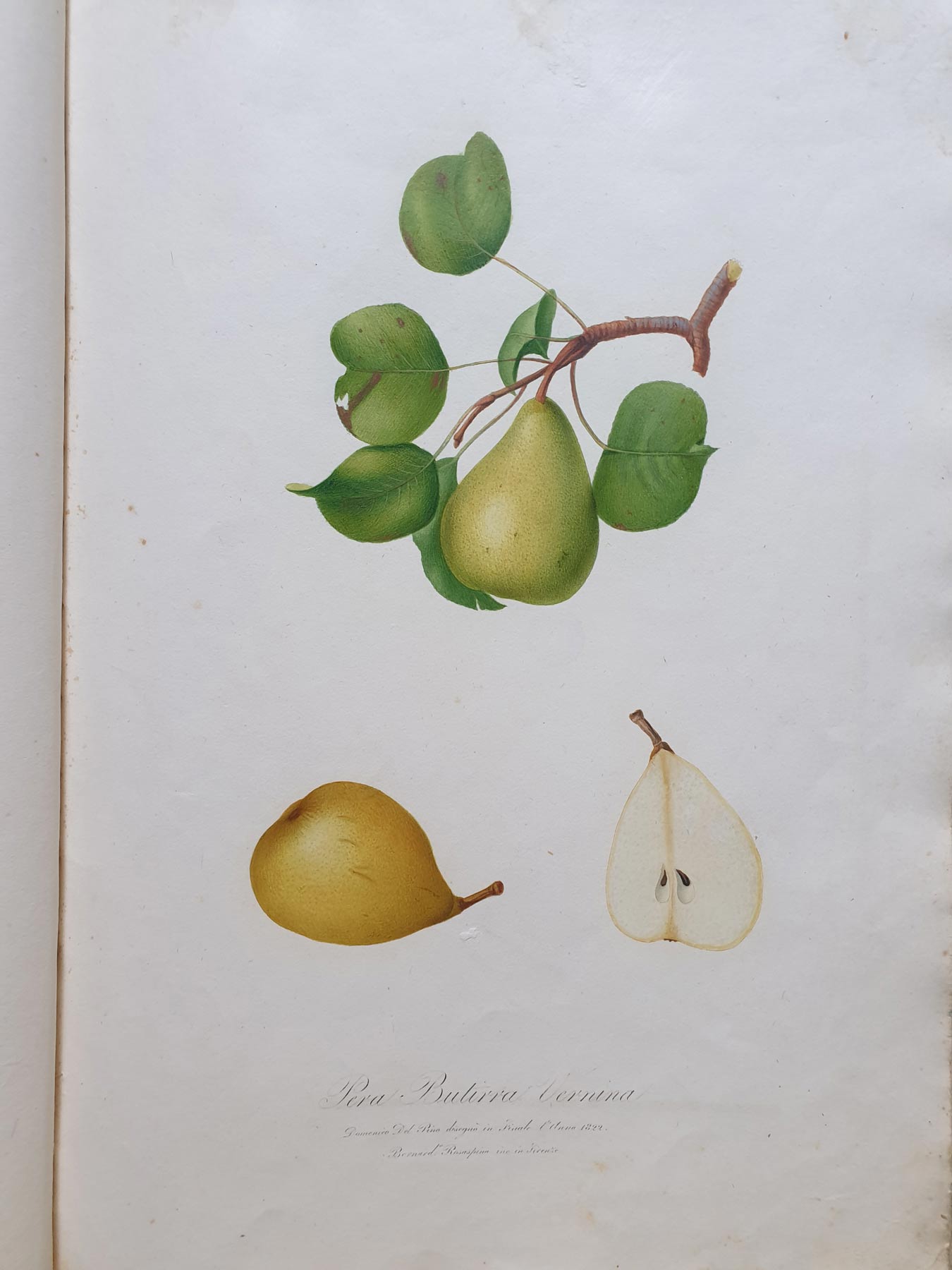 Italian
Italian Italian
Italian


The University Library of Pavia, one of the oldest in Italy, began work in 1754 as an auxiliary library of the University of Pavia, but it did not begin to have its own physiognomy until 1763 when the first director, mathematician Gregorio Fontana, made arrangements to collect books at the Ghislieri College, which became the library’s de facto first home, opening to the public in 1772. With the move to the new Central Palace of the University, completed in 1778, the library, which was then called “Imperial Regia Biblioteca Ticinese,” officially opened. The institute’s first home was the Salone Teresiano (the library was in fact founded by Maria Theresa of Austria as part of her reforms of education and the university system), where in a few decades some fifty thousand volumes were gathered, purchased thanks to resources made available by the government of Austrian Lombardy. After the Unification of Italy, the library partly lost its connection with the University of Pavia due to new regulations and because of the establishment of the various faculty libraries that supplanted its functions. Today, the Pavia University Library is one of the peripheral institutes of the Ministry of Culture.
The current library holdings consist of more than 500,000 volumes, including 1,404 manuscripts, 1,153 parchments, 711 incunabula, 7,000 cinquecentine, more than 8,000 grips, more than 3,000 prints, and a thousand maps. Among the most valuable pieces are an 81-card manuscript transcription of St. Augustine’s Enchiridion dating back to the 11th century and a 14th-century Roman missal, both located in the Aldini Fund; the incunabula of theOpera of Lactantius and theHypnerotomachia Poliphili; the letters of Ugo Foscolo, Vincenzo Monti, Pietro Metastasio, Ippolito Pindemonte, and Camillo Benso di Cavour; the rare books collection, 160 volumes many of them dating back to the 16th century; the print collection; Pietro d’Abano’s Tractatus de venenis, part of the Santo Garovaglio bequest; the Marinetti fund, which arrived at the library between 1913 and 1916, when Filippo Tommaso Marinetti, who attended the University of Pavia for some time, donated to the institute 42 Futurist posters, some of his own publications, and the publications of other poets adhering to the movement such as Folgore, Buzzi, Papini, Palazzeschi, D’Alba, Govoni, and Chiti.

Warning: the translation into English of the original Italian article was created using automatic tools. We undertake to review all articles, but we do not guarantee the total absence of inaccuracies in the translation due to the program. You can find the original by clicking on the ITA button. If you find any mistake,please contact us.